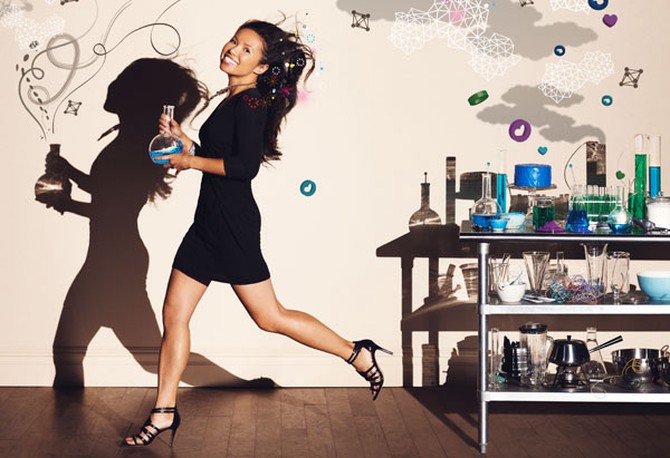You Don't Need to Be an Artist to Have Imagination
Four people whose knack for innovation has helped them make astonishing things.
Michelle Khine: The Reinventor
When Michelle Khine throws a dinner party, dessert might be cake wrapped in electroluminescent wires, or homemade coconut ice cream frozen instantly in a bowl of liquid nitrogen. "Growing up, I was a nerdy kid who loved to experiment in the kitchen," says Khine, 34, whose mom—a chemist—taught her how to cook.
It's fitting, then, that Khine's kitchen provided the stage for the niftiest feat of her career. She had just landed a research job at the brand-new University of California campus at Merced, which was little more than a construction site. She'd intended to work with microfluidic chips—silicon circuits that scientists want to develop into bedside tests for diseases—but she didn't have a lab. Puttering around her kitchen one day, she remembered her favorite childhood toy: Shrinky Dinks, the sheets of plastic that kids decorate with paint, pens, or colored pencils, then bake. After a trip to a crafts store and with the help of a laser printer and a toaster oven, Khine created her own Shrinky Dink "lab on a chip": an improbably viable alternative to high-grade silicon devices made with multimillion-dollar equipment. She later developed Shrinky Dink–based tools for culturing stem cells to grow new heart tissue, and hopes her chips will someday be used in supercheap diagnostic tests for patients in the developing world.
"I try to think about things very simply," says Khine, now an assistant professor at UC Irvine. "When my students get stuck, I tell them to stop making things complicated and pare it down to first principles." For Khine, getting unstuck means taking a break—preferably in the company of her petite black Labrador mix, whom her students have nicknamed MicroLab. "My best inspiration and ideas come when I'm walking the dog or driving or taking a shower," she says. "If I let a problem simmer long enough, something clicks."
—Aaron Rowe
It's fitting, then, that Khine's kitchen provided the stage for the niftiest feat of her career. She had just landed a research job at the brand-new University of California campus at Merced, which was little more than a construction site. She'd intended to work with microfluidic chips—silicon circuits that scientists want to develop into bedside tests for diseases—but she didn't have a lab. Puttering around her kitchen one day, she remembered her favorite childhood toy: Shrinky Dinks, the sheets of plastic that kids decorate with paint, pens, or colored pencils, then bake. After a trip to a crafts store and with the help of a laser printer and a toaster oven, Khine created her own Shrinky Dink "lab on a chip": an improbably viable alternative to high-grade silicon devices made with multimillion-dollar equipment. She later developed Shrinky Dink–based tools for culturing stem cells to grow new heart tissue, and hopes her chips will someday be used in supercheap diagnostic tests for patients in the developing world.
"I try to think about things very simply," says Khine, now an assistant professor at UC Irvine. "When my students get stuck, I tell them to stop making things complicated and pare it down to first principles." For Khine, getting unstuck means taking a break—preferably in the company of her petite black Labrador mix, whom her students have nicknamed MicroLab. "My best inspiration and ideas come when I'm walking the dog or driving or taking a shower," she says. "If I let a problem simmer long enough, something clicks."
—Aaron Rowe
From the February 2011 issue of O, The Oprah Magazine


